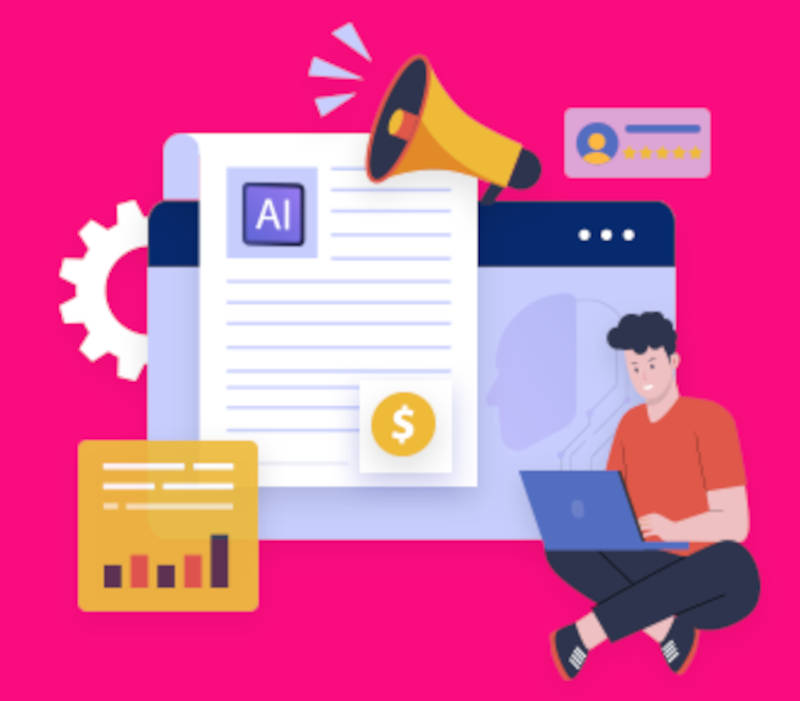Email Marketing
How to Create AI Marketing Content That Drives Conversions
In today’s fast-paced digital world, artificial intelligence (AI) has transformed marketing content creation. It’s now easier than ever to create targeted, engaging marketing content that truly resonates with audiences and drives conversions. But many marketers are still not using AI effectively, resulting in bland, uninspired content that fails to capture attention.
For content that converts, you need to understand both the fundamentals of great marketing and how to effectively leverage AI to create that content. This guide will walk you through actionable steps to ensure that your AI-generated content achieves meaningful results—from optimizing for user intent to using contextual product placements, adding compelling visuals, creating nurturing email sequences, and understanding your audience’s needs.
1. Optimizing Content for User Intent
At the heart of high-performing marketing content lies a deep understanding of user intent. “User intent” refers to the goal a person has in mind when performing a search or visiting a website. It’s the “why” behind their actions, whether they’re looking for information, buying a product, or seeking recommendations. Understanding this intent is crucial for creating content that aligns with what your audience truly wants.
Let’s say someone searches for “how to brew coffee.” Their intent may seem straightforward, but a closer look reveals that they’re seeking information, not necessarily looking to buy coffee-making equipment. By crafting content that focuses on methods and techniques for brewing coffee, you can better satisfy their intent, which improves your content’s relevance and engagement potential. Matching your content with user intent also boosts search engine ranking, as platforms like Google prioritize content that meets the searcher’s needs.
How AI Can Help Identify User Intent: AI can analyze search keywords and user behavior patterns to provide insights into user intent. Start by using AI-powered tools to research the common search terms associated with your topic, then ask the AI what user intent looks like for each term. This can give you a clear view of what users are hoping to find.
For even deeper insight, provide the AI with more information, such as your target audience’s age, demographics, and specific challenges they face. This will allow it to generate content suggestions that are more accurately aligned with what users are truly looking for. Remember, when your content meets user intent, your audience is more likely to engage, stay on your page, and, ultimately, convert.
2. Incorporating Contextual Product Placements
One common marketing pitfall is publishing content without a clear conversion goal. Great content not only attracts readers but also guides them toward an action, like purchasing a product or signing up for a service. AI can help with this by ensuring your product mentions are smoothly integrated into the content, enhancing the overall experience instead of detracting from it.
Imagine you’re writing an article on “how to brew coffee.” If you were to simply insert a product link without context, readers might see it as an abrupt and jarring promotion. Instead, AI can suggest a natural way to mention a coffee dripper that enhances flavor. This approach not only provides value by recommending relevant products but also encourages conversions more organically.
Using AI to Place Products Naturally: AI can be prompted to identify points within your content where product mentions would feel most natural. For instance, if you’re writing about different brewing methods, you might ask AI to add a recommendation for a particular brand of pour-over equipment when discussing the pour-over technique. This way, the recommendation feels like part of the flow rather than a sales pitch.
With a well-placed product suggestion, your content can serve a dual purpose: educating the reader and creating a subtle, yet powerful, call to action that boosts conversion rates.
3. Adding Compelling AI-Generated Visuals
Visuals play a crucial role in digital marketing. They not only enhance the aesthetic appeal of your content but also make it more engaging and memorable. Traditionally, creating high-quality visuals would require a graphic designer, but with AI, you can now generate attractive visuals quickly and cost-effectively.
For example, if you’re writing a blog about productivity, you could use AI to create custom illustrations for each section. These visuals help break up large blocks of text, make the content more digestible, and provide context that can reinforce your message. Visuals that are unique to your content also make it stand out from the competition, offering a better user experience.
AI Prompting for Visual Content: AI can create visuals based on prompts that describe your desired style, central image, and supporting elements. Here’s a prompt template you can use:
- “Generate a realistic product mockup for [product], showcasing its [key features] in a [setting or environment]. Highlight the [unique selling points] and [benefits] to allow customers to envision the product.”
For instance, a blog post about email marketing might feature an illustration of a person reviewing an email on a laptop, surrounded by elements like a magnifying glass, analytics chart, and a personalized message. AI can also help customize color schemes and typography to match your brand.
With AI-driven visuals, your content gains a professional edge, captures attention, and creates a cohesive look that enhances your brand identity.
4. Creating Effective Email Nurturing Sequences
Every email you send is an opportunity to connect with your audience and move them further along the customer journey. Rather than sending one-off emails, a nurturing sequence—a series of emails that gradually builds rapport and drives action—can significantly boost conversions.
AI can assist in building an effective email sequence tailored to your audience’s needs. For example, if you run a fitness coaching service, your goal might be to engage new subscribers, provide valuable health tips, and lead them to sign up for a consultation.
Setting Up AI for Email Nurturing: To get started, provide AI with details about your business, audience, and goals. You could prompt it with something like:
- “Create an email nurturing sequence for people who have downloaded our fitness guide. The sequence should include an introduction, tips on starting a fitness journey, an offer for a free consultation, and a testimonial email.”
AI can then generate email topics, outlines, and even content suggestions to keep your sequence consistent and engaging. Each email should guide the reader toward your desired goal, whether it’s subscribing to a service or making a purchase.
By using AI for email nurturing, you save time and ensure a cohesive messaging strategy that enhances customer engagement and builds trust.
5. Leveraging Customer Insights for More Relevant Content
Creating content that resonates with your audience requires a deep understanding of their needs and pain points. By gathering insights from customer feedback, you can tailor your content to address their specific challenges, making it more engaging and effective.
AI can analyze user-generated content—such as reviews, social media posts, and forum discussions—to identify common questions or complaints. This information is invaluable for creating content that speaks directly to your audience’s needs.
How AI Can Mine Customer Insights: Start by gathering data from sources like Reddit, Facebook groups, Amazon reviews, and YouTube comments. Feed this data into your AI tool, which can then process and summarize common themes. For example, if you’re in the wellness industry and notice frequent mentions of stress and time management, you might create content addressing these topics directly.
AI can then suggest formats and content ideas based on these insights. Perhaps your audience is interested in a blog post on “5 Quick Stress Relief Techniques for Busy Professionals.” When your content reflects the real needs of your audience, it’s far more likely to drive engagement and conversions.
Additional Tips for Using AI to Create High-Converting Content
Use AI to Generate A/B Test Variants
AI can help generate multiple versions of headlines, product descriptions, and even entire articles. By A/B testing different versions, you can identify what resonates most with your audience, optimizing for higher conversion rates.
Refine AI Output with Clear, Specific Prompts
To get the best results, ensure your prompts are as specific as possible. Include target audience details, content goals, and style preferences. For example:
- “Generate an engaging headline for a blog post aimed at new small business owners, focusing on cash flow management tips.”
Experiment with AI Content Styles
AI can mimic different tones and styles, from friendly and conversational to formal and technical. Test various styles to see which resonates best with your audience, particularly if you’re marketing to different demographics.
Conclusion
Creating AI-powered marketing content that converts is within reach, but it requires a thoughtful approach. By aligning your content with user intent, placing products contextually, adding compelling visuals, nurturing relationships through email sequences, and leveraging customer insights, you can build a powerful content strategy that engages and converts.
As you experiment with AI, keep refining your prompts and learning from the results. With practice, you’ll be able to produce high-quality, conversion-focused content that captures your audience’s attention and drives real business results.
>>>Join The One Funnel Away Challenge<<<






























